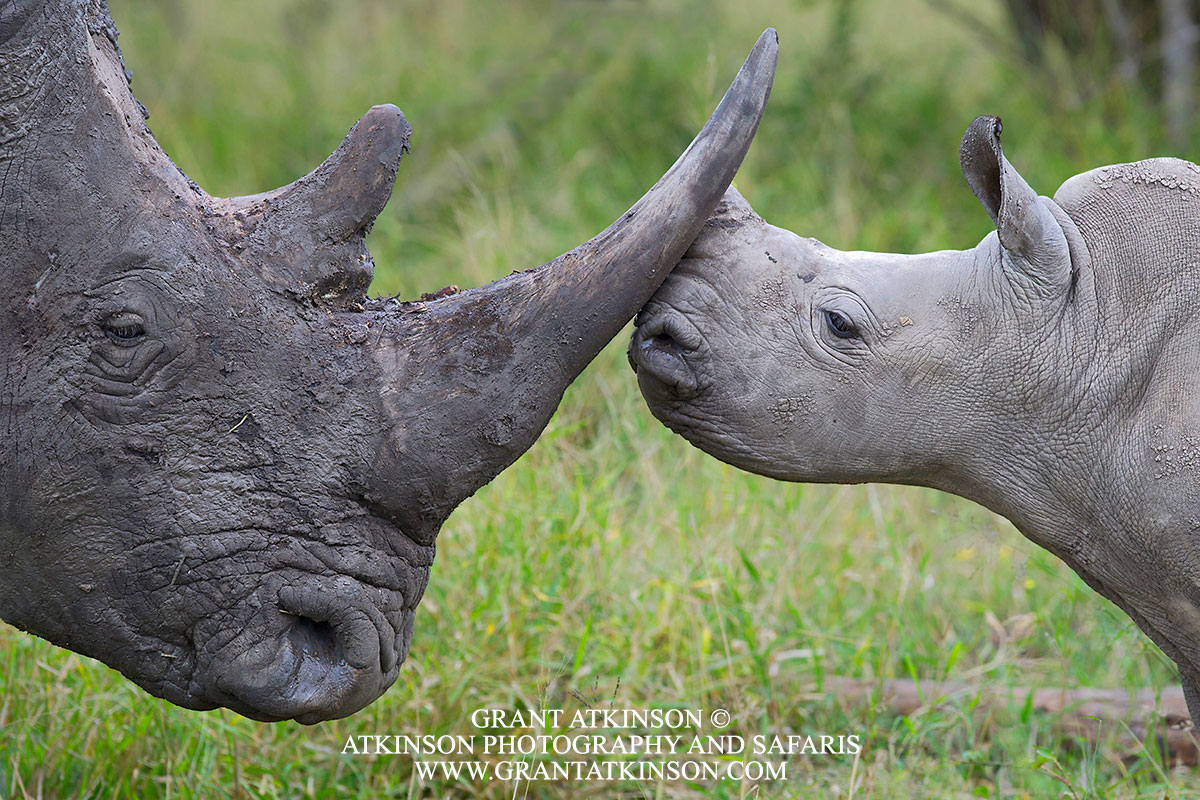African Rhino Facts – How Much Do You Know?

The rhinoceros is a treasured sight for wildlife lovers. But its small population gives it a mysterious quality.
There are dozens of little-known secrets about Africa’s rare rhinos! Here are just a few.
Ngorongoro Crater is Home to Several Black Rhinos Named Mike

The Ngorongoro Conservation Area Authority (NCAA) manages rhino populations meticulously, recording travel patterns, health, social behavior and much more for each rhino.
The NCAA developed a naming convention to keep records in order. In 2010, there were four males named Mike – Mike I, Mike II, Mike III and Mike IV.
Mike I, also named John the Rhino, fathered 26 calves, making up roughly 70 percent of the rhino population in the crater.
Rhinos are Descendants of the Largest-ever Land Mammal
Today’s black rhino stands roughly 5-feet tall, weighing up to 3,000 pounds. The white rhino is larger, weighing twice as much and standing up to 6-feet tall.
Paraceratherium, an ancestor of the rhino, towered 18-feet and weighed 22 tons. These giant rhinos roamed most of the Earth around 30 million years ago. They used their size to scavenge tall trees and looked more like giraffes than the rhinos of present day.
Another fun fact, like the elephant, the rhino also has a shaggy-haired, woolly ancestor.
 P. transouralicum is the closest known relative to Paraceratherium.
P. transouralicum is the closest known relative to Paraceratherium.
Restoration of P. transouralicum by Dmitry Bogdanov licensed by CC BY 3.0
 Rhino size comparisons.
Rhino size comparisons.
Estimated size (dark grey) compared to that of a human and other rhinoceroses by DagdaMor licensed by CC BY 3.0
Rhinos are Sometimes Blindfolded and Suspended from Helicopters for Transport
Rhino must be transplanted to create thriving new populations, but moving an animal of several tons across unpaved terrain is easier said than done.
The solution? Sedate them, blindfold them and airlift them with military helicopters of course!
.embed-container { position: relative; padding-bottom: 56.25%; height: 0; overflow: hidden; max-width: 100%; } .embed-container iframe, .embed-container object, .embed-container embed { position: absolute; top: 0; left: 0; width: 100%; height: 100%; }
Reportedly, this is one of the safest and most humane ways to transport rhinos to new territories.
YOU Can Help Protect Africa’s Rhino
The rhino population is under constant threat from poachers. The population is bouncing back from a dire low point in the ’90s, but a poaching uptick has sadly slowed progress.
The African Wildlife Foundation (AWF) does an incredible amount to protect rhino.
Moreover, tourists contribute huge amounts to Tanzania’s conservation efforts. Tanzania National Parks (TANAPA) manages all local rhino populations, and it funds activities solely through tourism revenue! That revenue comes from conservation and park usage fees, and a whopping 75% of park users are tourists from overseas.
Don’t underestimate how much a simple visit can do.

